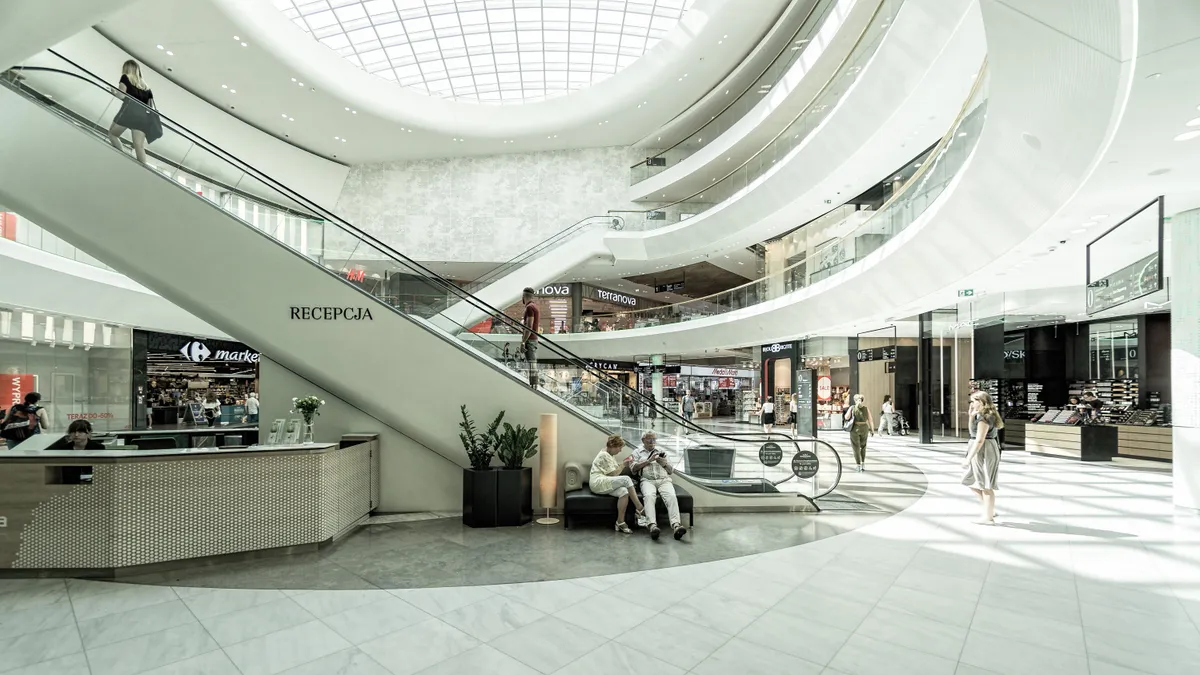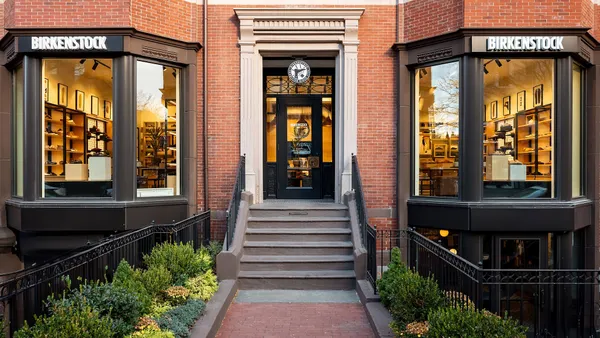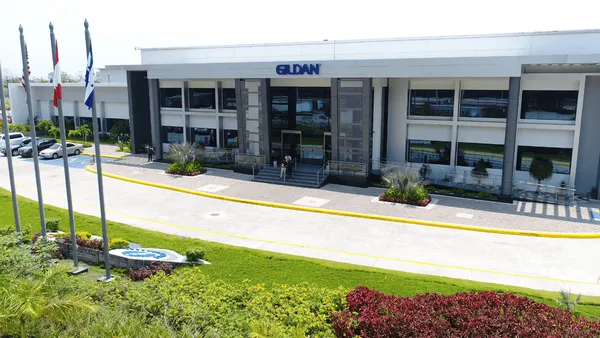Dive Brief:
- With their fates tied to an industry disrupted by COVID-19, retail-based REITs might not recover until 2022, according to a report released Wednesday by S&P Global.
- Analysts with the ratings agency expect "significant cash flow volatility" for retail REITs this year, with a "gradual" recovery beginning in 2021. The road to that recovery will be "rocky," though, with "sustained retail disruption" and bankruptcies of mall-based retailers, per the report, which was emailed to Retail Dive.
- "We expect a bumpy road to recovery for retail REITs as rent deferrals, risk of write-offs, and the accelerated pace of store closings will impact recovery prospects for retail landlords," S&P analysts Samantha Stevens and Kristina Koltunicki said in the report.
Dive Insight:
Discretionary retail — much of which still takes place inside malls — has been "squarely in the crosshairs" of the COVID-19 pandemic, as S&P noted in a prior report.
Amid the mass closures of March and April, retail tenants went into hibernation, and many of them skipped rent or worked out agreements with landlords to postpone it, adding it to the back end of the year or their leases. As this week's S&P report on REITs notes, there was a strong correlation between whether retailers were able to stay open and rent payments from this spring.
This "bodes well for July," the analysts note, pointing to around 70% of retail tenants being open by the beginning of June. But, they also note, surges of COVID-19 infections in many states have put retail's reopening at risk, and with it the revenue for malls.
Amid the crisis, many retailers have already entered bankruptcy, planning to shutter either a sizable chunk of or their entire store fleet. That's another hit for landlords in an environment where not a lot of retailers are expanding their footprint in malls.
Some landlords are already starting to feel the pain. Among REITs, CBL & Associates is reportedly preparing for Chapter 11 after missing a multimillion-dollar interest payment earlier this summer. As with other mall owners and operators, CBL's problems long preceded COVID-19.
As an operator of primarily B-Class malls, CBL's fate has been tied to a sector of retail that has been in steady decline for decades. That decline accelerated in the past five years, as mall traffic plummeted and more consumer dollars have gone toward off-price, e-commerce and big-box retail, as well as to non-retail spending on experiences.
COVID-19 precipitated another massive acceleration of longstanding trends. To again take CBL as an example, the company's rental revenue fell 15.6% year over year in the first quarter. "The majority of our tenants requested rent relief, either in the form of rent deferrals or abatements," CBL CEO Stephen Lebovitz said in a statement in May. "We have placed a number of tenants in default for non-payment of rent."
Across Mall REITs broadly, only about 29% of mall rents were paid in April and 30% were paid in May (based on early estimates), according to Jefferies data.
As S&P noted, strip centers and higher-quality malls could fare better amid the ongoing crisis and economic downturn, and many REITs are well-capitalized, meaning they can absorb the impact on their cash flows for a while. Still, it will be a long and painful road to whatever recovery looks like for malls.














